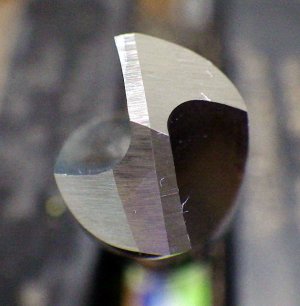A little off subject but I have a question. I am a mechanic by trade and I work on a ton of diesels and therefor see my fair share of broken off stainless bolts in various sizes too. Question is what would be you guys go to drill bit for this kind of work? Material, degree and anything else you could add. Also do muy fair share of exhaust manifold bolts where drilling dead center is an absolute must
I keep (the shop keeps) double ended sheet metal shorties in stock for that sort of thing. 1/8, 3/16, and 1/4. We get them from Kimball, but you can get them anywhere really. Usually in the auto body stuff. Essentially they're disposable drills for "crap" jobs. Far cheaper to the customer than averaging in me maintaining my drill bits. Bog standard HSS drills, split point, not a lot of depth to the flutes, Gotta be CAREFUL not to fill the flutes if you're going deeper, but they're stout. Or pilot some, drill some, pilot some more, drill some more. That's often good medicine anyhow, as burying a tiny drill deep in anything in "freehand mode" is best avoided. Once you get the pilot in, any reasonably sharp drill will be fine. I just use straight up high speed steel. We don't (can't....) keep a decent grinder wheel at the shop, so I sharpen with a drill doctor there. Not the greatest edges possible, but plenty good enough. The magic to that is not so much the drill, as stainless actually cuts fine. The magic is feed pressure. You've got to lean on the drill, HARD. if ANY drill stops cutting and rubs, it's game over with the hand drilling thing. That's where the nightmares come from. If you let off the pressure, it'll work harden, and then it's nothing but tears. In a workshop environment, no fixtured machine tools- That means fighting work hardened metal ALL THE WAY THROUGH. Part of the art is knowing when to not even bother fighting for it, and make access so that you don't have to fight, and can keep that required pressure, and never let it harden. .
If your shop by chance does business with Kimball, it's just their black oxide version. Your sales critter will know just what they are.
McMaster has them as well, these are pretty close kin to the ones I use.
Or you can get them ten thousand other places too.
McMaster-Carr
McMaster-Carr is the complete source for your plant with over 595,000 products. 98% of products ordered ship from stock and deliver same or next day.

